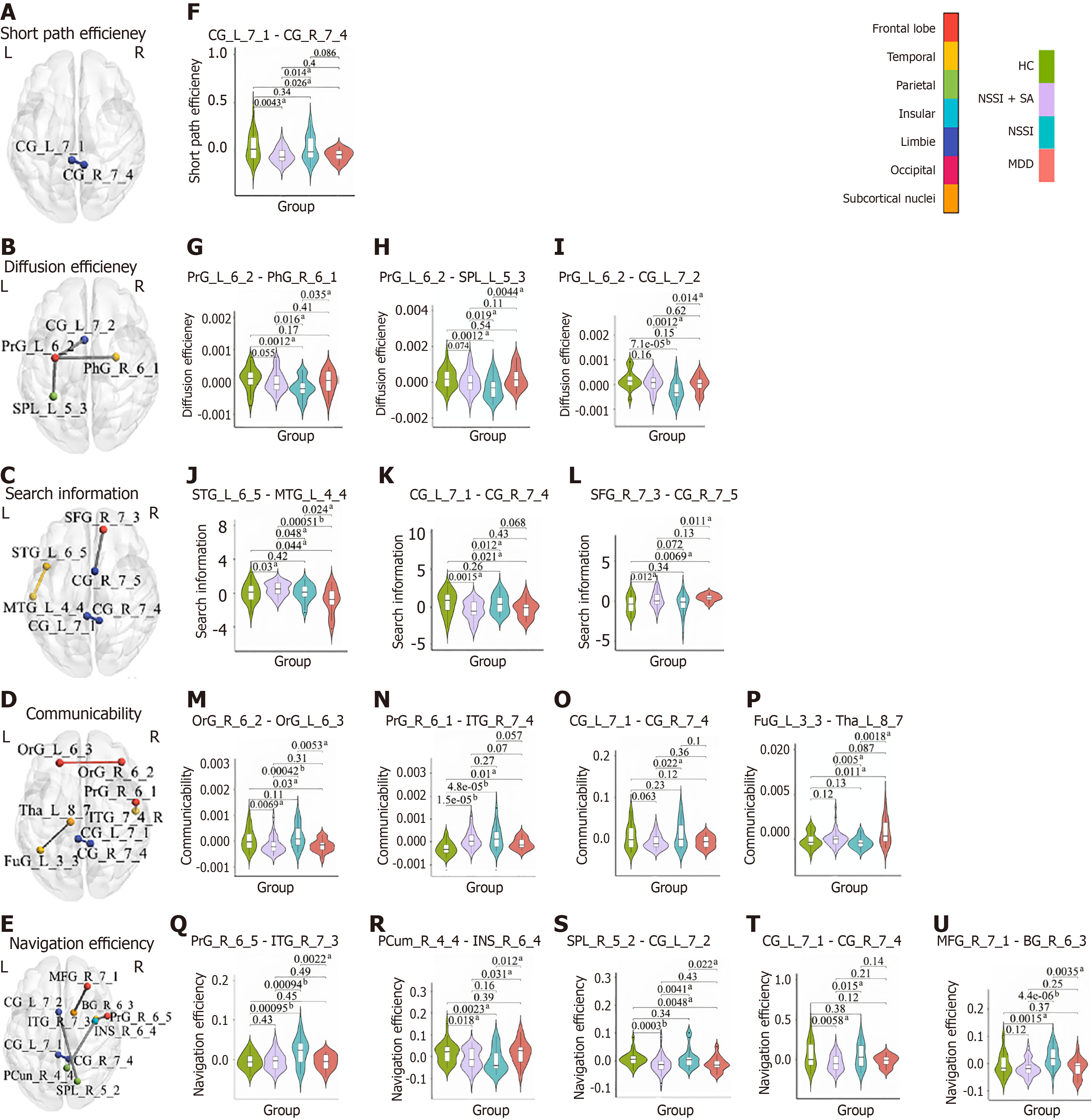Copyright
©The Author(s) 2025.
World J Psychiatry. May 19, 2025; 15(5): 102706
Published online May 19, 2025. doi: 10.5498/wjp.v15.i5.102706
Published online May 19, 2025. doi: 10.5498/wjp.v15.i5.102706
Figure 2 The results of five whole-brain communication models analysis across the healthy controls, non-suicidal self-injury + suicide attempts, non-suicidal self-injury, and major depressive disorder groups.
aP < 0.05; bP <0.001. A-E: Illustrate the F-test results presented from the dorsal view of the brain; F-U: Depict the post-hoc results of these connection results. HC: Healthy controls; NSSI: Non-suicidal self-injury; SA: Suicide attempts; MDD: Major depressive disorder; CG: Cingulate gyrus; PrG: Precentral gyrus; STG: Superior temporal gyrus; SFG: Superior frontal gyrus; OrG: Orbital gyrus; FuG: Fusiform gyrus; PCun: Precuneus; SPL: Superior parietal lobule; MFG: Middle frontal gyrus.
- Citation: Wang S, Qin JL, Yang LL, Ji YY, Huang HX, Gao XS, Zhou ZM, Guo ZR, Wu Y, Tian L, Ni HJ, Zhou ZH. Structural network communication differences in drug-naive depressed adolescents with non-suicidal self-injury and suicide attempts. World J Psychiatry 2025; 15(5): 102706
- URL: https://www.wjgnet.com/2220-3206/full/v15/i5/102706.htm
- DOI: https://dx.doi.org/10.5498/wjp.v15.i5.102706









